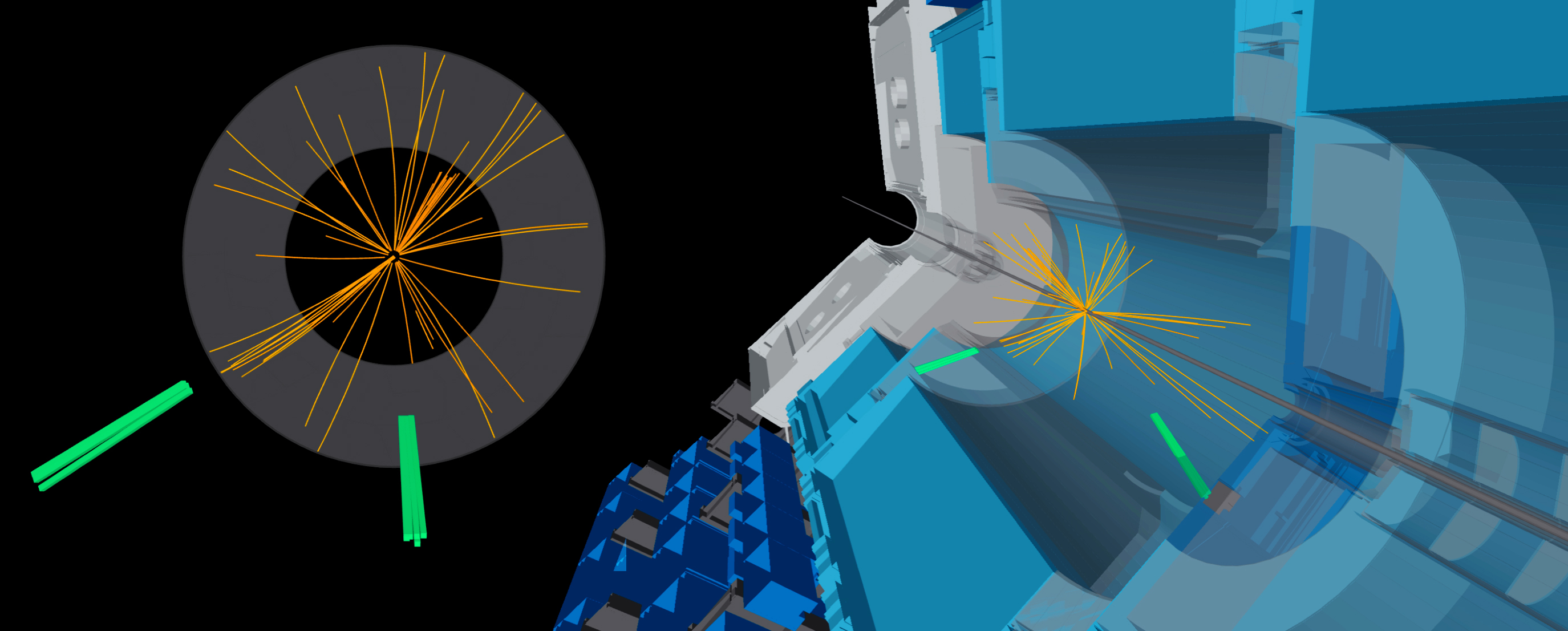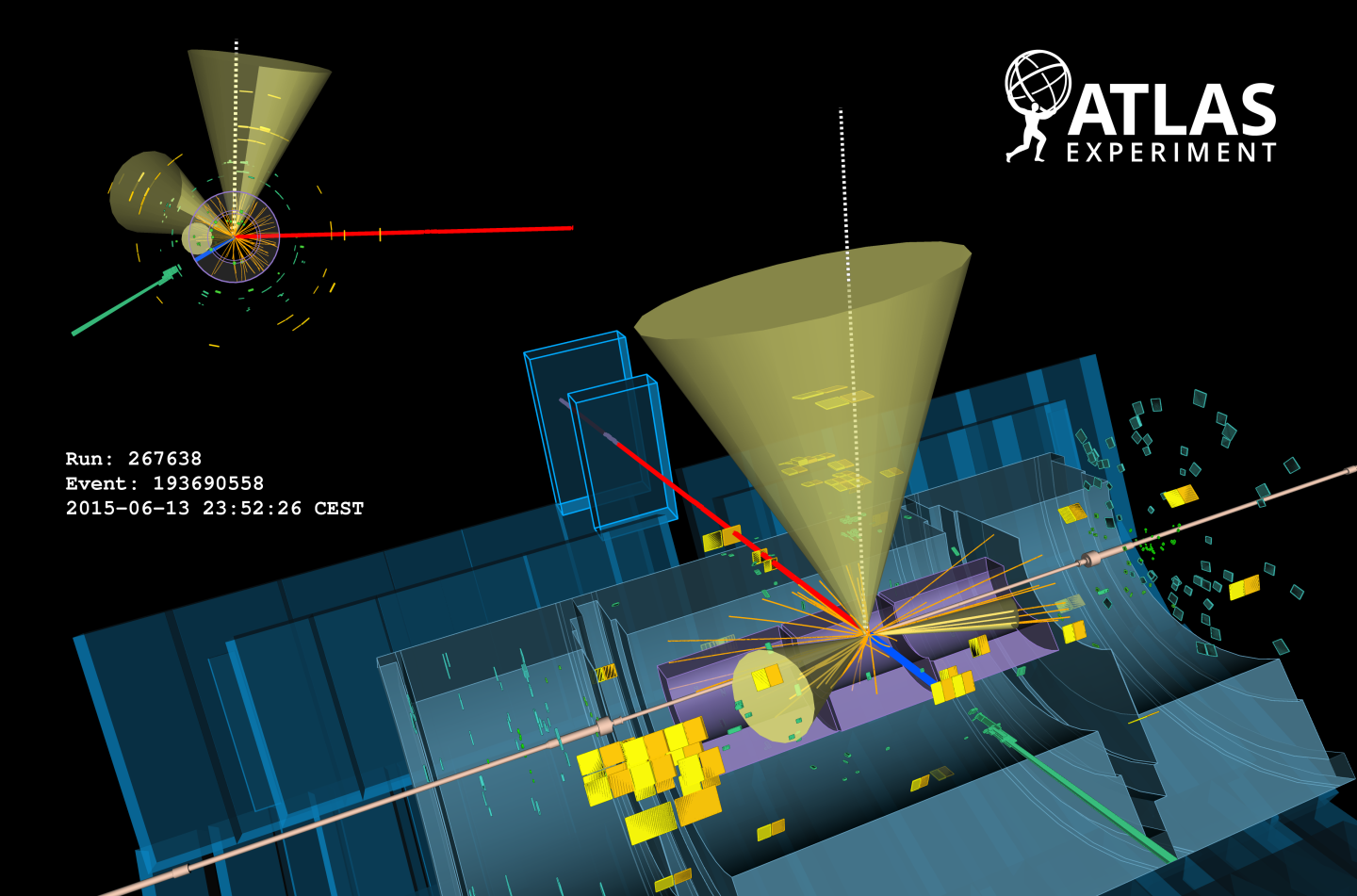ATLAS highlights from the Moriond 2023 conference
2 May 2023 | By
The Rencontres de Moriond conference series includes two of the most prestigious conferences in particle physics, bringing together physicists from collider, neutrino, dark matter and astroparticle physics. They are hosted in the Alps among the ski slopes, fostering close interactions between scientists and providing the opportunity to discuss the latest physics results. This year, the Electroweak Interactions & Unified Theories conference welcomed about 150 participants each, ranging from veteran physicists to new PhD students.
ATLAS researchers presented several new results at Moriond, spanning over a decade of LHC data. These included new precision studies of ATLAS’ earliest data (collected in 2011), novel measurements using the full LHC Run-2 dataset (recorded from 2015 to 2018), and first studies with the Run-3 dataset (collected in 2022) at a centre-of-mass energy of 13.6 TeV. Select highlights are discussed below.
Weighing the W boson one more time

Despite four decades of study, the W boson continues to be a subject of intense study. Various properties of this particle are sensitive to the presence of new physics. In particular, the W-boson mass (mW) provides a powerful probe for checking the self-consistency of the Standard Model. In 2017, the ATLAS Collaboration published one of the world’s most precise determination of this value. In 2022, the CDF Collaboration at Fermilab published an even more precise measurement of the W-boson mass, but this result differs significantly from the Standard Model prediction and from the other experimental results.
In a new preliminary result presented at Moriond, the ATLAS Collaboration reported an improved re-analysis of its initial W-boson mass measurement. Researchers revisited data collected in 2011 at a centre-of-mass energy of 7 TeV, employing improved statistical methods and further refining the treatment of data. As shown in Figure 1, ATLAS finds mW to be 80360 MeV, with an uncertainty of just 16 MeV. The measured value has a 15% lower uncertainty than the previous ATLAS result and is in agreement with the Standard Model.
While this result shows the amazing precision at which ATLAS physicists can determine fundamental physics constants, it leaves the puzzle of W-boson mass open. Additional measurements of the W-boson mass are eagerly expected from other experiments, as well as further ATLAS studies using data samples recorded in different pile-up conditions and at different centre-of-mass energies to independently evaluate these results.
Observing a rare process

The top quark is the heaviest quark – by a significant margin – in the Standard Model. This gives it a special status, as it can provide insight into the origin of mass and electroweak symmetry breaking. As such, the properties of the top quark – such as the charge-asymmetry in top-quark-pair production – have been studied extensively by different experiments over the years studied. However, until now, one specific process evaded observation: the simultaneous production of four top quarks in a single proton-proton collision.
Using the full LHC Run-2 dataset, ATLAS physicists looked for four-top-quark events in which the top-quark decays lead to either two leptons with the same charge or three leptons. While this final state accounts for only 13% of all four-top-quark decays, fewer background processes contaminate the search and allow the team to more easily identify signal events.
For this result, the team also leveraged an improved understanding of major background processes, new developments in detector performance and new analysis techniques. To improve the result even more, a state-of-the-art machine-learning technique called a Graph Neural Network was employed to further separate the signal process from the background processes. This selection is shown in Figure 2.
Putting these all together allowed the ATLAS Collaboration to report the observation of four-top-quark production. The observed significance is 6.1 standard deviations – greater than the 5 standard deviation threshold to claim observation. The measured rate of four-top-quark production is 1.9 times higher than the Standard-Model prediction, consistent within 1.9 standard deviations.
The new ATLAS results examine over a decade of LHC data, from ATLAS’ earliest Run-1 dataset (collected in 2011) to the very first studies of the Run-3 dataset (collected in 2022).
Pushing existing boundaries and finding new ones
Measurements of the W-boson mass and four-top-quark production weren’t the only results of their kind presented at Moriond. The strong-coupling constant was precisely measured by studying the recoil of the Z boson, and the simultaneous production of three bosons in various combinations, including W bosons, Z bosons and photons, were observed for the first time.
The large Run-2 dataset also allowed physicists to perform detailed studies of rare processes. Both the differential cross-section and the CP invariance of the Higgs boson produced through vector-boson fusion (a sub-dominant process) and the production of W boson in association with a charmed meson were studied in exquisite detail. The combination of these measurements provide a stringent test of the Standard Model and create new ways to study this theory in ever-increasing detail.
Despite the success of the Standard Model, there are various known phenomena it cannot describe. ATLAS physicists are looking for a multitude of different kinds of new-physics signatures, including the production of a top quark in association with a muon and tau lepton. Though top quarks are produced copiously at the LHC, this process would violate the known symmetries of the universe and provide direct confirmation for new physics. Despite the large available statistics, no evidence for this process was observed by ATLAS.
Other, more exotic theoretical models were also tested using the Run-2 dataset. Various extensions of the Standard Model predict the presence of new heavy particles or new bosons that couple to both leptons and quarks simultaneously. These new particles can either decay into known particles such as bottom quarks or tau leptons, which can be directly studied, or completely escape detection and show up as missing energy in the detector. No evidence was observed for any of these processes – the hunt for new physics continues.
Higgs boson at a new centre-of-mass energy

After three years of upgrades, the LHC recently started its third period of operation (Run 3), colliding protons at a record-breaking energy of 13.6 TeV. This provides physicists a completely new energy regime to test the Standard Model and study various processes. At Moriond, the ATLAS Collaboration presented the very first Higgs-boson measurement using the 31.4 fb-1 of data collected in 2022 at this energy.
The Higgs-boson decay into two photons leaves a distinct signature in the ATLAS detector. As shown in Figure 3, by computing the invariant mass distribution of these photons, the Higgs boson shows up as a peak at around 125 GeV in the Run-3 dataset.
Using these events, the analysis team measured the production cross-section of the Higgs boson to be 67 pb with an uncertainty of about 18% at 13.6 TeV. This is consistent with the Standard-Model prediction within 1 standard deviation. This result highlights the impressive speed at which ATLAS physicists are able to understand and calibrate new data. It took only a few months to perform this measurement on a particle that originally took decades to discover.
Over the coming years, the ATLAS experiment is expected to accumulate a new dataset larger than all previous ones combined. This wealth of data will not only provide extremely exciting opportunities to measure the Higgs boson, but also for other studies of Standard-Model processes and for searches for new physics phenomena.
Learn more
- Summary of new ATLAS results from 2023 Winter Conferences, ATLAS News, March 2023
- See also the full lists of ATLAS Conference Notes and ATLAS Physics Papers.




